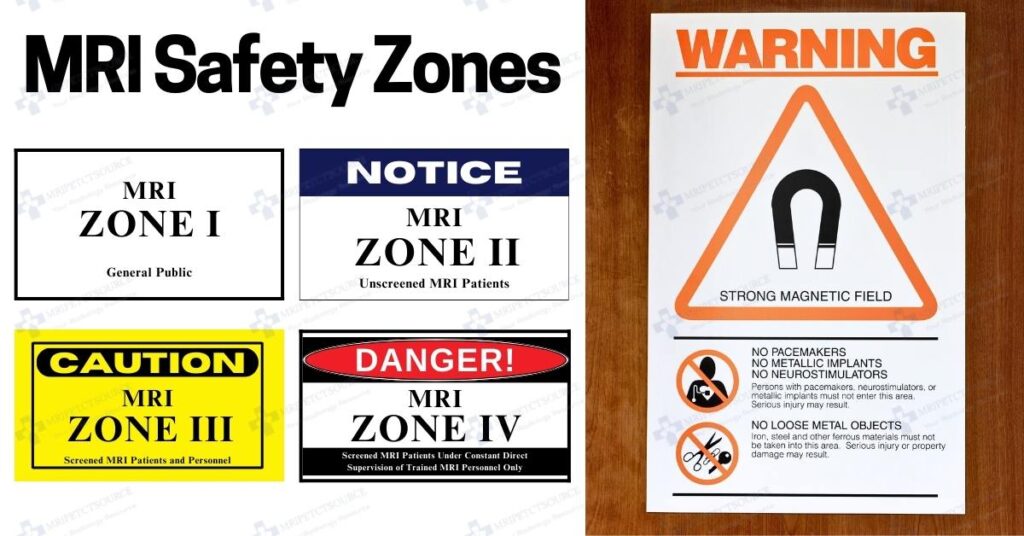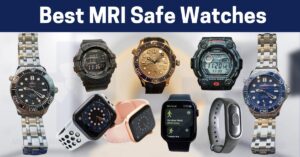MRI safety is a paramount concern within radiology facilities, and to address this, the American College of Radiology has implemented a comprehensive system of MRI safety zones. The MRI zones 1-4 safety guidelines described below are integral in minimizing potential risks associated with magnetic resonance imaging (MRI). While MRI is generally safe for patients, there are certain safety precautions that must be taken when in close proximity to the strong magnetic fields present in MRI scan rooms.
In this article, we detail what MRI safety zones are and why they are important. Recognizing the importance, associated risks, and recommended safety guidelines in each zone is essential for effective risk management in MR imaging.
What Are MRI Zones?
MRI safety zones are delineated areas within an MRI suite that help to manage the potential risks associated with powerful magnetic fields. The American College of Radiology (ACR) has classified these zones into four distinct levels, namely Zones I through IV. Each zone corresponds to increasing levels of magnetic field exposure, reflecting the escalating safety concerns associated with higher field strengths.
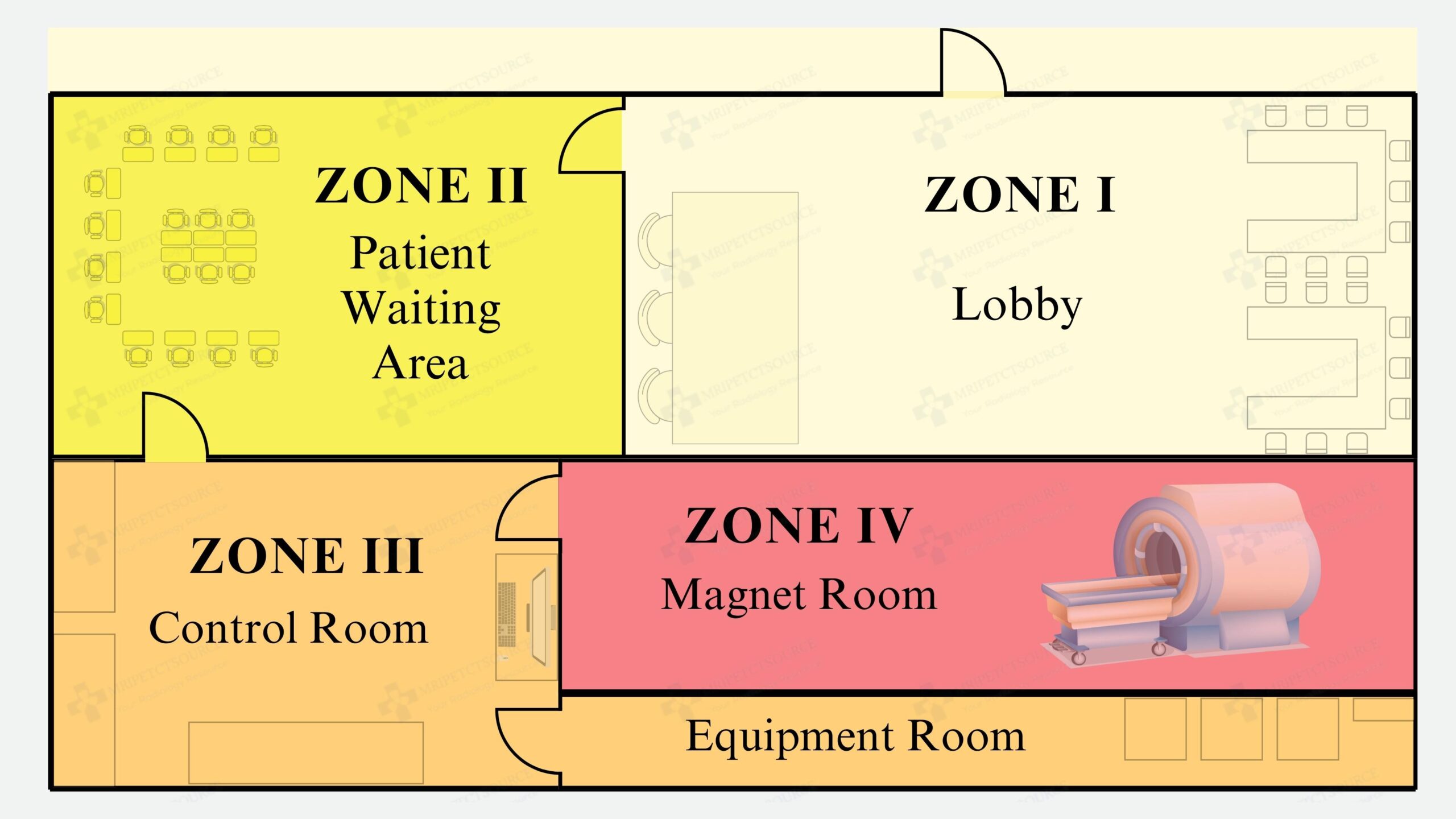
The categorization into designated MRI zones enables imaging professionals to implement appropriate safety measures based on the specific characteristics of each zone. Exploring each zone reveals the safety measures that are crucial for protecting patients and healthcare personnel. Lets start with the least stringent of the 4 MRI zones: Zone 1.
MRI Zone 1
The MRI Zone 1 comprises all areas around the MRI suite that are openly accessible to the general public. This zone serves as the pathway for patients, MRI technologists, healthcare personnel, and other facility employees to access the MRI area. Within MRI zone I, magnetic fringe fields are limited to less than 5 Gauss (0.5 mT).
Common examples of MRI zone I spaces include lobbies, check-in areas and waiting rooms, which require no screening, allowing unrestricted access.
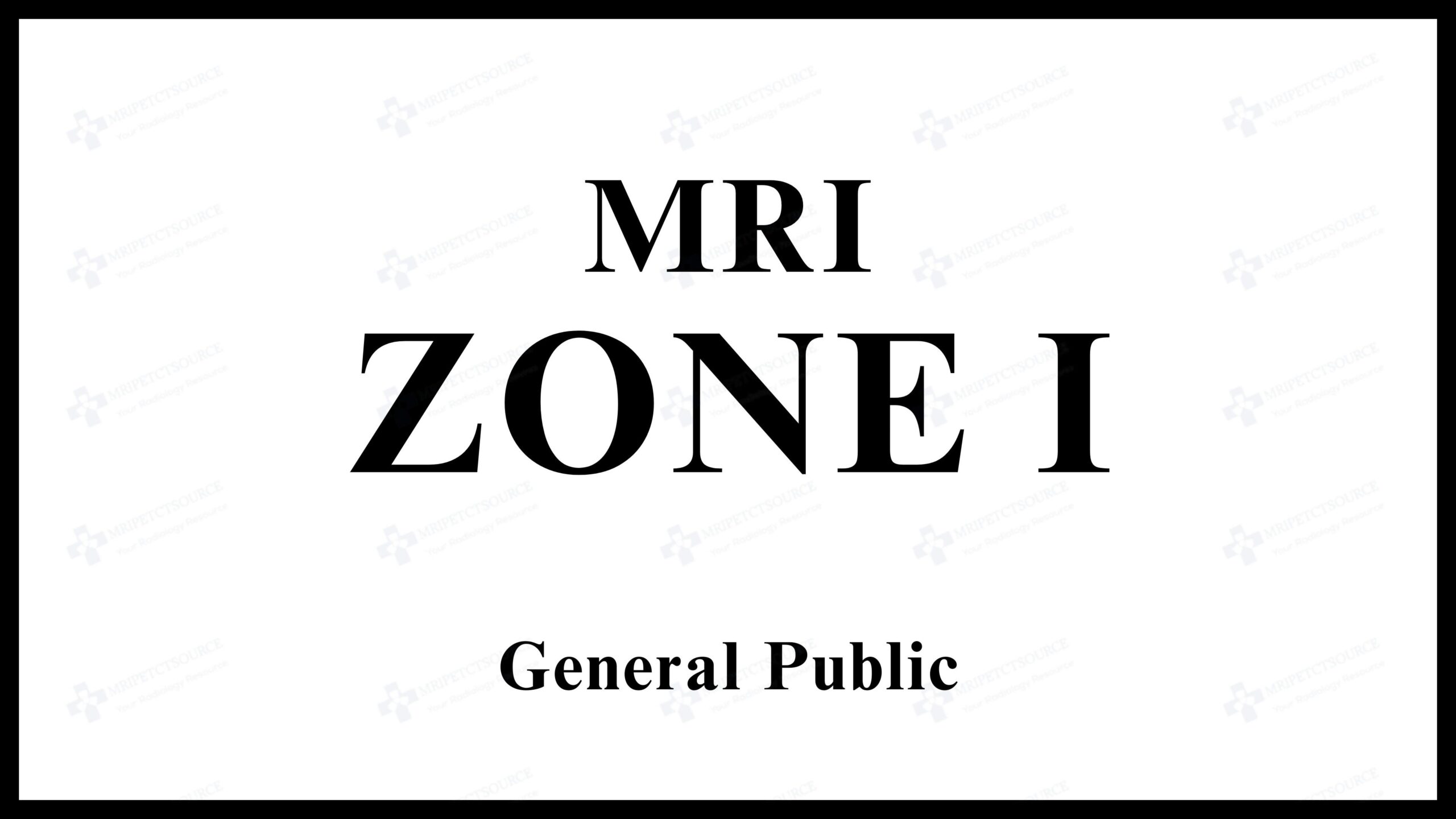
MRI Zone 1 Screening Requirements
In Zone I, no screening is required for the general public.
MRI Zone 2
MRI Zone 2 acts as a buffer between unregulated Zone I and strictly controlled Zones III and IV. In Zone II, patients move freely under MR Personnel supervision. Patient preparation, including MRI screening and gowning, occurs here. The area is crucial as it serves as a seamless transition from the public zone to controlled environments.
Screening is a prerequisite, and patient companions, post-screening, can assist under MR personnel guidance. Zone II plays a pivotal role in maintaining safety protocols during patient interactions and preparatory processes for MRI examinations.
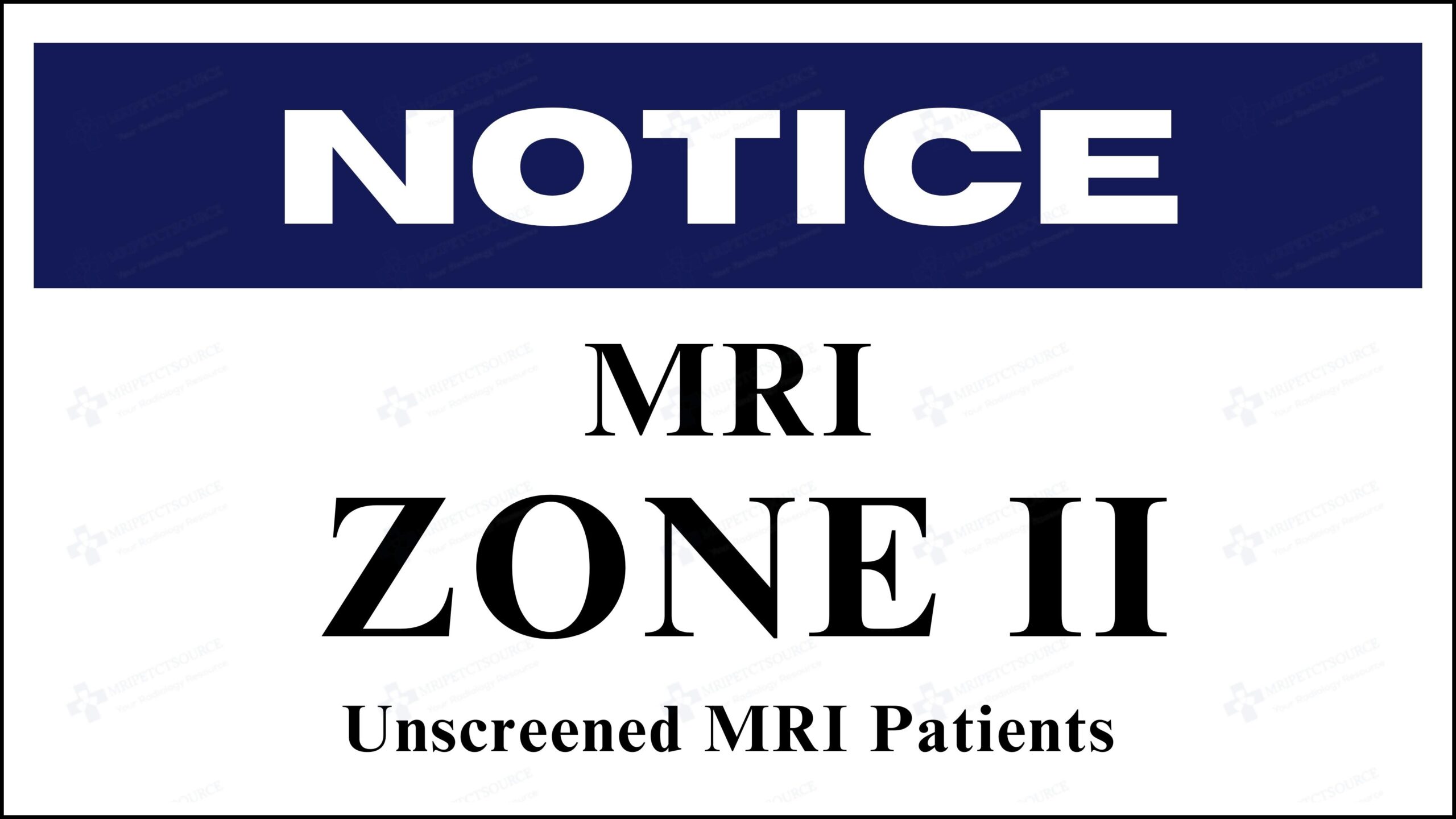
MRI Zone 2 Screening Requirements
In Zone II, patients undergo MRI safety screening.
MRI Zone 3
MRI Zone 3 is a critical region near the magnet room and demands strict supervision. Non-MR Personnel must be accompanied by a MR Personnel at all times, ensuring safety in this potentially hazardous area.
Access by unscreened Non-MR Personnel poses serious risks. Physical restrictions, including key locks, limit access to Zone III to screened individuals only. Even in changing rooms or bathrooms within zone 3, constant audible contact is essential due to the close proximity of strong magnetic fields.
Clearly mark and demarcate Zone III as potentially hazardous to prevent unauthorized access. Under direct supervision, only screened individuals can access MRI Zone 3.
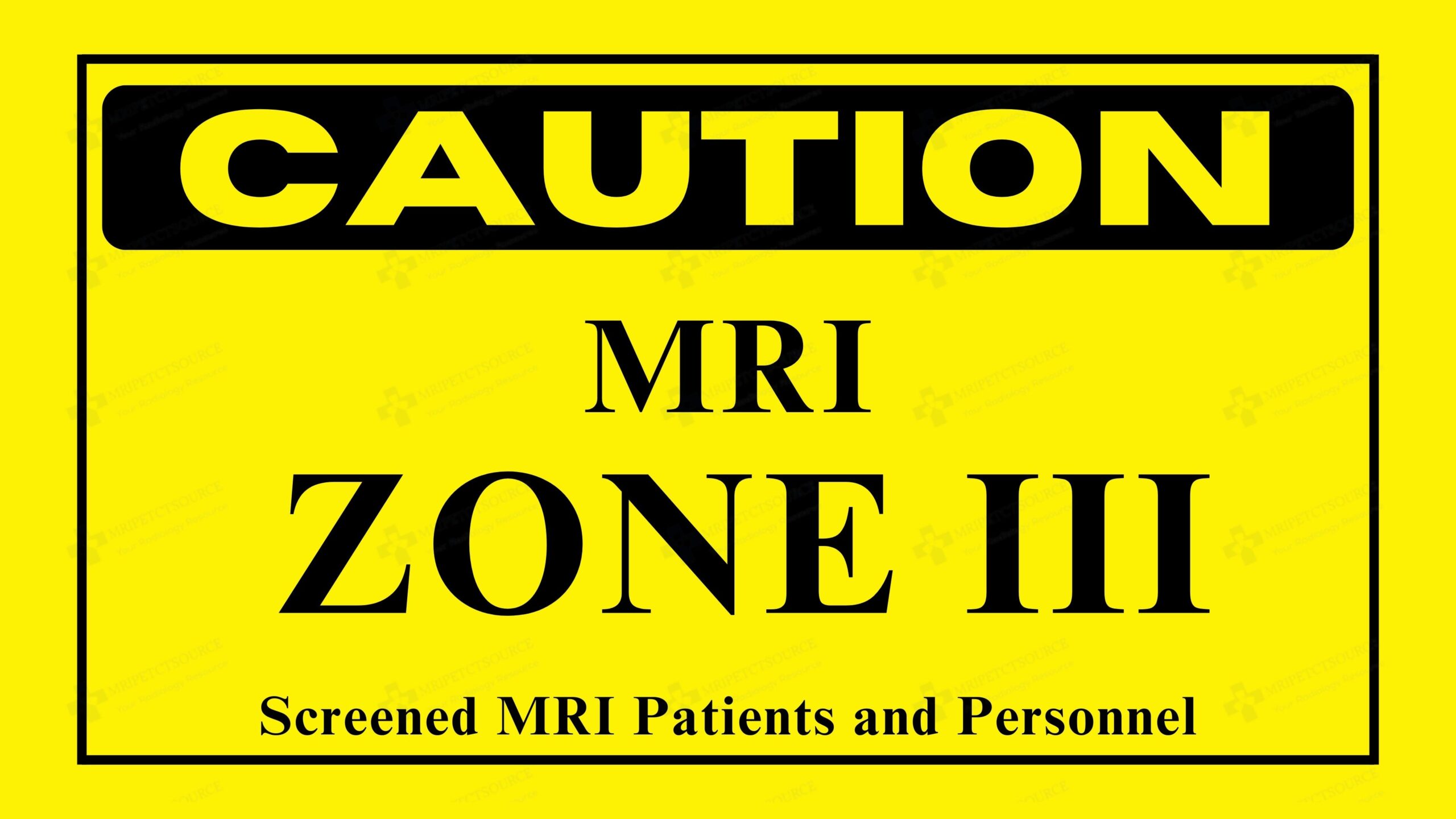
In simpler terms, MRI Zone III is the area near the magnet room, where strong magnetic fields pose risks. Only screened individuals, accompanied by trained personnel, are allowed to enter area. Loved ones may accompany patients after thorough safety screening. Due to the risks posed by the strong magnetic field in close proximity, Zone III demands constant supervision for all non-MR personnel.
MRI Zone 3 Screening Requirements
Zone III permits access only to screened individuals due to proximity to the MRI scanner. It is important to note that fringe magnetic field may be present in MRI zone 3. Prior to entering MRI Zone 3, remove all ferromagnetic objects from individuals.
MRI Zone 4
MRI Zone 4 is synonymous with the MR scanner room. This is MRI safety zone where the highest magnetic field exists. Access to MRI zone 4 is restricted to individuals that have been screened, then given final clearance granted by MR personnel. Level 2 MR personnel must directly observe all non-MR personnel at all times while in Zone 4.
A prominently displayed red warning sign marks the entrance to Zone IV. Recommend caution barriers during open door times to restrict access.
Label this area as potentially hazardous due to the strong magnetic fields produced by the MRI magnet.
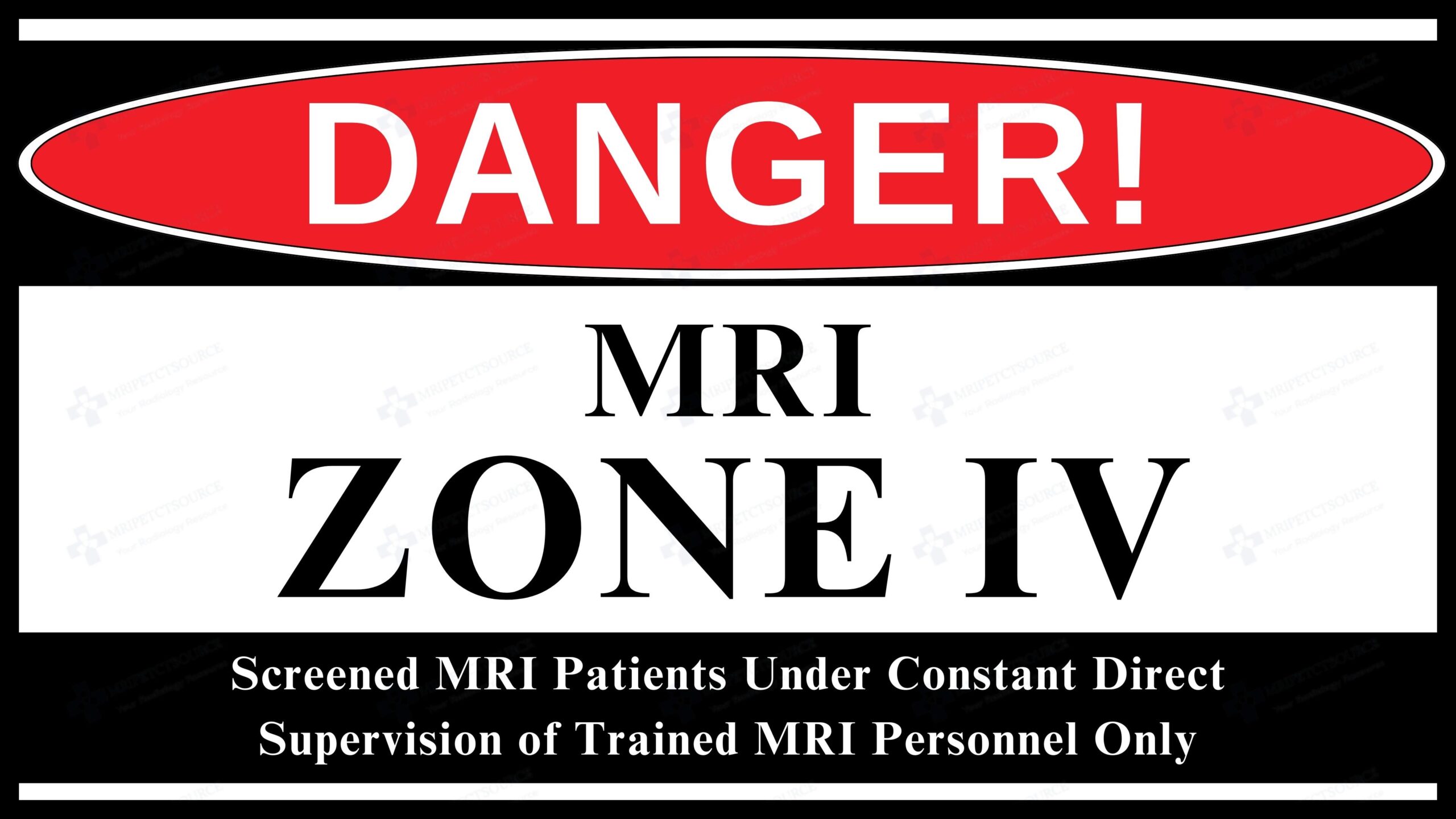
MRI Zone 4 Screening Requirements
Entry to Zone IV is exclusively reserved for individuals cleared by MR personnel. Final screening is required before entering area due to the presence of strong magnetic fields.
It is important to note that fringe magnetic field may be present in MRI zone 3. Prior to entering MRI Zone 3, remove all ferromagnetic objects from individuals.
Related articles:
MRI Zones 1-4 Compatibility
Being aware of the risks in MRI Zones 1-4 is paramount for ensuring safety within the magnetic resonance imaging environment. Each zone presents unique challenges, and understanding these risks is crucial for both healthcare professionals and patients. Additionally, labeling all ferromagnetic items near Zones 3 and 4 is essential to prevent potential hazards.
Accurate identification of ferromagnetic objects, proper item labeling and preventative measures implemented within MRI Zone 3 and 4, contribute significantly to maintaining a secure and hazard-free MRI facility.
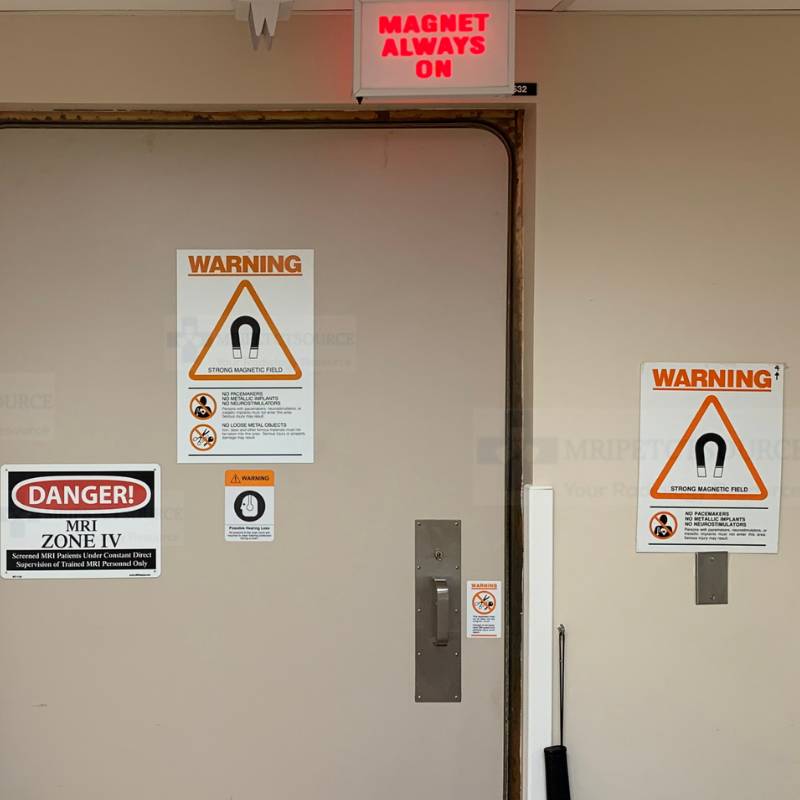
MR Safe
Objects labeled MR Safe are considered safe in all MR environments without conditions. Manufacturers often craft these objects from nonmetallic, nonconducting, and nonmagnetic materials.
MR Conditional
Items labeled MR Conditional are safe in the MR environment if specific conditions are met, considering tested field strengths. MRI conditional items require additional information identifying magnetic field limitations. For example: MR Conditional (Up to 7T).
MR Unsafe
Objects labeled MR Unsafe are known to pose safety risks in the MR environment, primarily due to ferromagnetism.
Conclusion
Knowing and following procedures for the four MRI safety zones set forth by ACR helps to ensures the safety of patients, loved ones, and MR personnel. It is important to understand, Non-MR Personnel must undergo MR safety screening before entering MRI Zone III. Additionally, a final authorization is required by MR personnel before entering MRI Zone IV.
MRI safety zones are essential due to the potentially hazardous magnetic field generated by the MRI machine. The powerful MRI magnet can pull metal objects with great force, causing severe injury or damage. Whether referencing MHRA MRI safety zones guidelines, or those set forth by ACR, it is imperative to observe the best MRI safety practices to reduce the inherent risk of accidents in MRI environments.
Related resources
Join the Medical Imaging Source Community!
Subscribe To Our Newsletter To Stay Up To Date With The Latest News, Exclusive Offers, And Giveaways!
The information provided by MRIPETCTSOURCE (“we,” “us,” or “our”) on https://www.medicalimagingsource.com (the “Site”) is for general informational purposes only. All information on the Site is provided in good faith, however we make no representation or warranty of any kind, express or implied, regarding the accuracy, adequacy, validity, reliability, availability, or completeness of any information on the Site. UNDER NO CIRCUMSTANCE SHALL WE HAVE ANY LABILITY TO YOU FOR ANY LOSS OR DAMAGE OF ANY KIND INCURRED AS A RESULT OF THE USE OF THE SITE OR RELIANCE ON ANY INFORMATION PROVIDED ON THE SITE. YOUR USE OF THE SITE AND YOUR RELIANCE ON ANY INFORMATION ON THE SITE IS SOLELY AT YOUR OWN RISK.

